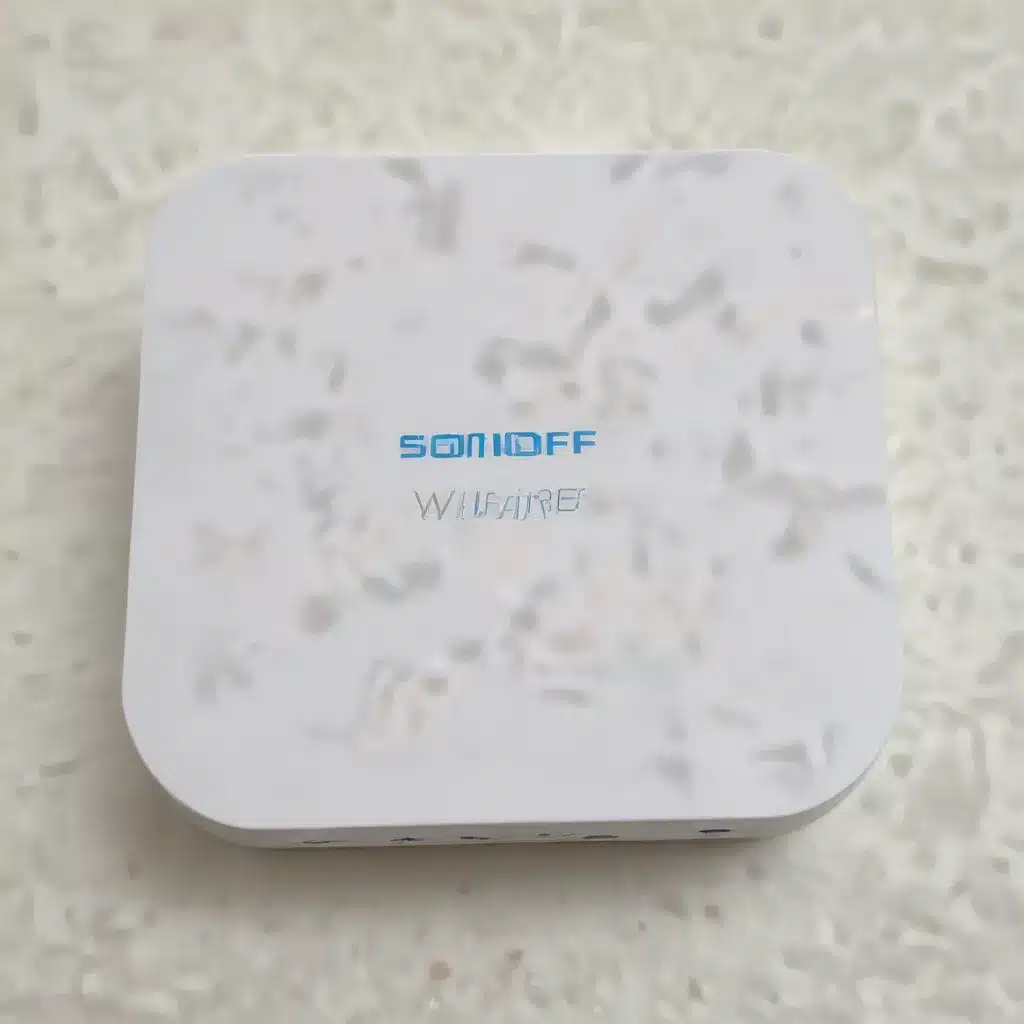
Unlocking the Power of Wireless Control with the Sonoff RF Bridge
As an experienced IT professional, I’ve been exploring ways to enhance the smart home capabilities in my own residence. One particular device that caught my eye is the Sonoff Wi-Fi RF Bridge, a compact and versatile solution that promises to integrate various wireless devices into my home automation system. In this in-depth review, I’ll dive into the features, setup process, and real-world performance of the Sonoff RF Bridge, offering practical insights and troubleshooting tips to help you decide if this device is the right fit for your smart home needs.
Unboxing and First Impressions
The Sonoff RF Bridge arrived in a compact package, containing the device itself and a quick start guide. At first glance, the bridge appears deceptively simple, measuring just 2 inches (5 cm) square. Despite its small size, the device packs a punch, with two LED indicators – one for Wi-Fi status and another for RF status – and a reset button accessible via a paper clip.
Setting up the Sonoff RF Bridge
To get the Sonoff RF Bridge up and running, I began by connecting it to a power source capable of providing 5 volts and 1 amp, such as a standard phone charger or a battery pack. Once powered on, I used the eWeLink app to connect the bridge to my home Wi-Fi network, a process that was fairly straightforward.
The app also allows you to “pair” RF devices with the bridge, teaching it to recognize and mimic the signals from various remotes, sensors, and other wireless controllers. By entering a pairing mode and performing an action on the target RF device within 60 seconds, the bridge can capture and store the necessary codes, effectively turning it into a universal remote.
Integrating the RF Bridge with Home Assistant
As an avid Home Assistant user, I was eager to explore the possibilities of integrating the Sonoff RF Bridge with my smart home platform. While there isn’t an official integration, I discovered several workarounds to achieve this integration seamlessly.
Option 1: Using the Sonoff Integration in HACS
The Home Assistant Community Store (HACS) offers a Sonoff integration that allows you to connect the RF bridge to your Home Assistant instance by logging in to your eWeLink account. This proved to be the easiest and most straightforward method for me, as it requires minimal setup and provides reliable functionality.
Option 2: Running the Sonoff RF Bridge in Docker
For those running Home Assistant in a Docker environment, there’s an alternative approach. By setting up a Docker container for the Sonoff RF Bridge, you can achieve the same level of integration without the need for custom firmware or additional hardware.
Option 3: Building Your Own RF Bridge
For the more technically inclined, there’s also the option of building your own RF bridge using the core components found inside the Sonoff device – an ESP8285 chip for Wi-Fi and Bluetooth, and an EFM8BB1 chip for RF communication. This approach offers more customization and control but requires a higher level of technical expertise.
Challenges and Compatibility Concerns
While the Sonoff RF Bridge has a lot of potential, I did encounter a few challenges during my testing. Notably, I was unable to get the bridge to detect my existing wireless doorbell, despite both devices operating on the same 433.9 MHz frequency.
It’s important to note that the RF bridge’s compatibility can be hit-or-miss, as the device-specific codes used for pairing may not always work as expected. This is particularly true for devices like car remotes, where the codes are often changed for security reasons.
However, the RF bridge did perform well with other types of RF devices, such as window sensors, alarms, and curtain controls. Just be sure to check the compatibility before purchasing, as Sonoff’s marketing materials don’t always provide a comprehensive list of supported devices.
Exploring Alternative Options
In light of the compatibility issues I encountered, I decided to explore an alternative option – a Sonoff RF bridge that uses the Tuya platform. This model, which I sourced from AliExpress, offers support for both the 433 MHz and 315 MHz RF bands, as well as infrared control, potentially expanding the range of devices I can integrate.
I’ll be sure to provide an update on my experience with the Tuya-based RF bridge in a future article, as I continue to explore the evolving landscape of smart home technologies and integration possibilities.
Conclusion: Sonoff RF Bridge – A Versatile, Yet Inconsistent Smart Home Solution
The Sonoff Wi-Fi RF Bridge is a compact and intriguing device that offers a unique way to connect legacy, non-smart devices to your home automation system. While the integration process can be a bit finicky, the ability to control IR and RF-based devices through platforms like Home Assistant is a valuable feature for tech-savvy users.
However, the bridge’s compatibility limitations and the need for workarounds to achieve seamless integration may be a deterrent for some. Ultimately, the Sonoff RF Bridge is a tool that requires patience and a bit of tinkering to unlock its full potential, making it best suited for users who are comfortable with smart home experimentation and troubleshooting.
For those seeking a more plug-and-play experience or a device with more comprehensive compatibility, alternative options may be worth considering. As the smart home technology landscape continues to evolve, I’ll keep a close eye on new developments and provide updates on the latest solutions to help you make informed decisions for your home automation needs.
To stay up-to-date with the latest articles and smart home insights, be sure to check out the IT Fix blog and subscribe to our weekly newsletter.












